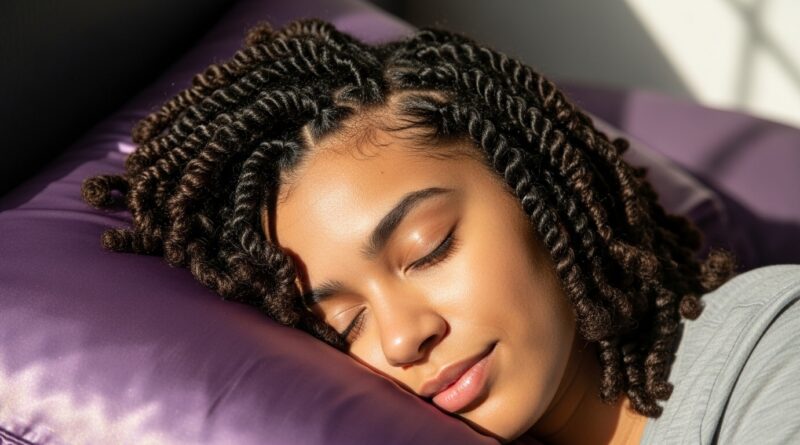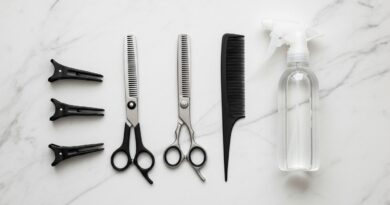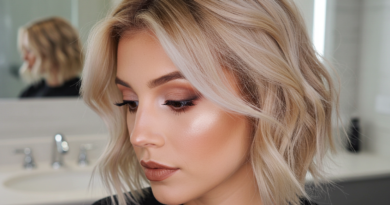6 Subtle Changes That Make Your textured hair Look Brand New
Have you ever looked at your hair and felt… stuck? Your routine is the same, the products are the ones you’ve always used, but your curls, coils, or waves just aren’t singing like they used to. They feel dry, look limp, or lack that vibrant definition you crave. You might be tempted to try a dramatic chop or a bold color, but what if the secret to revitalizing your textured hair wasn’t a major overhaul, but a series of subtle, intelligent shifts?
The truth is, the smallest changes in your technique and product choices can have the most profound impact. It’s not about discarding everything you know, but about refining your approach to work in greater harmony with your hair’s unique needs. Get ready to fall in love with your hair all over again. Here are six subtle changes that can make your textured hair look and feel brand new.
1. The Pre-Poo Power-Up: Don’t Skip the Pre-Cleansing Prep
For many with textured hair, shampoo day can feel like a necessary evil. While cleansing is crucial, the sulfates in some shampoos can be harsh, stripping your hair of its natural oils and leading to dryness and frizz. This is where the “pre-poo” (pre-shampoo) treatment comes in as a total game-changer.
The concept is simple: you apply a beneficial oil, conditioner, or butter to your hair before you shampoo. This creates a protective barrier on the hair shaft, preventing the shampoo from being too stripping. It allows you to cleanse your scalp effectively while keeping your strands soft, hydrated, and manageable. Think of it like putting lotion on your hands before washing dishes—it protects your skin from the drying soap.
How to implement this subtle change: 30 minutes before you hop in the shower (or even overnight for a deep treatment), section your damp or dry hair and apply a light oil like coconut, almond, or jojoba from your mid-lengths to ends. You can also use your favorite conditioner. Then, proceed with your regular shampoo and conditioning routine. The difference in softness and reduced tangling will be immediately noticeable.

2. The Squish to Condish Revelation: It’s All About Hydration Technique
You’ve probably been conditioned to rinse your hair until it’s squeaky clean. For textured hair, that “squeak” is the sound of all your moisture being stripped away. The “Squish to Condish” method is a subtle but revolutionary technique that transforms how your hair absorbs moisture during your conditioning phase.
This isn’t just about slapping on conditioner and rinsing it out. It’s a deliberate process of encouraging your hair cuticles to open up and drink in the hydration. After applying a generous amount of conditioner to your soaking wet hair, you cup water in your hands and gently “squish” it upwards into your hair, along with the conditioner. You’ll hear a squelching sound—that’s the sound of success! You repeat this process, adding more water and product as needed, until your hair feels heavy, cold, and incredibly slick.
How to implement this subtle change: In the shower with your hair drenched, apply conditioner. Then, cup water in your hands, bring a section of hair to it, and squish upwards. Do this all over your head. You’re not rinsing the conditioner out; you’re diluting it and forcing it into the hair shaft. When you’re done, you can rinse out a little or leave it all in for extra moisture. This single technique can boost curl definition and eliminate frizz like never before.
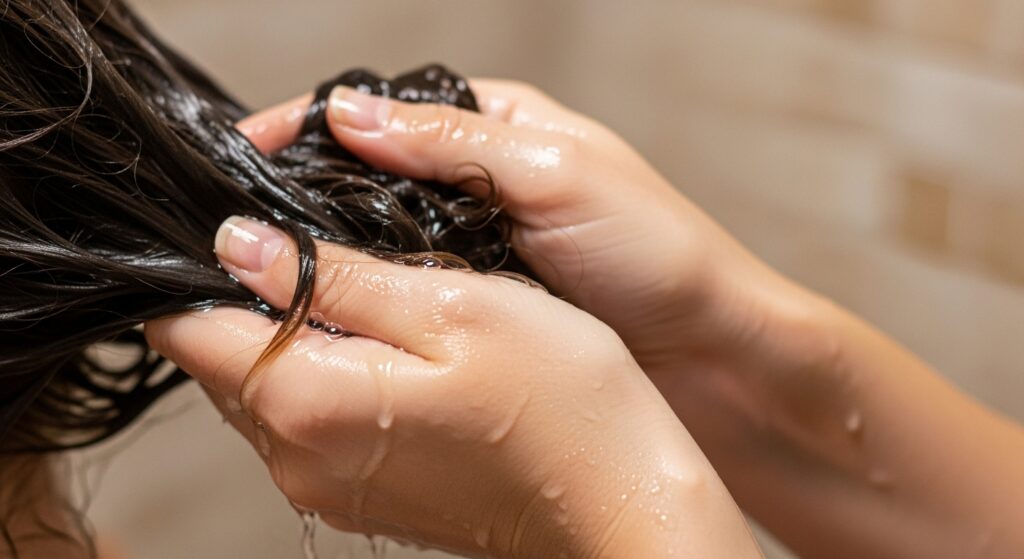
3. The “Praying Hands” Application: Smoothness Over Scrunching
Scrunching is the go-to motion for most curlies when applying stylers like gel or mousse. And while it’s great for encouraging curl formation, it can also inadvertently create frizz by disrupting the curl pattern and pushing hair in all directions. The “Praying Hands” method offers a sleeker, more uniform alternative.
This technique involves smoothing your product over your hair sections by gliding your palms together with your hair sandwiched flat between them, as if in prayer. This motion smooths the hair cuticle, aligns the curls, and distributes product evenly from roots to ends, sealing in the moisture from your conditioner. It lays a perfect foundation for defined, clumped curls with significantly less frizz.
How to implement this subtle change: After your leave-in conditioner, take a section of hair. Coat your palms with your styler (gel is perfect for this), then place the hair section flat between your two palms. Gently and slowly glide your hands down the length of the hair, from roots to ends, applying gentle pressure. You can follow up with a light scrunch to encourage curl formation, but the primary application should be smooth and deliberate. The result is a polished, defined curl clump that looks professionally done.

4. The Dynamic Dryer Switch: Ditch the Cotton, Embrace the Microfiber or T-Shirt
This might be the easiest change on the list, but its impact is massive. That fluffy, cotton towel you’ve been using to dry your hair is a primary culprit for frizz and breakage. The coarse, looped fibers of a terry cloth towel are too rough for delicate textured hair, catching on the cuticle and creating chaos.
Switching to a microfiber towel or a simple, soft cotton t-shirt can transform your hair’s surface texture. These materials are much smoother and more absorbent. They soak up excess water without the aggressive friction, allowing your curl pattern to set peacefully and reducing frizz from the very start of your drying process.
How to implement this subtle change: Simply retire your bath towel for hair duty. Instead, invest in a cheap microfiber hair towel or grab an old, clean t-shirt. After washing, gently squeeze the excess water from your hair using the t-shirt or microfiber towel. You can also “plop” your hair by piling it into the center of the shirt and tying it up. This simple swap will leave your hair feeling smoother and looking noticeably less frizzy as it dries.

5. The Strategic Clarifying Reset: Banish the Buildup
If your hair is feeling heavy, limp, or refuses to hold a style, it’s likely crying out for a reset. Over time, even the best products can build up on your hair and scalp. This includes oils, butters, silicones, and hard water minerals. This buildup creates a barrier that prevents moisture from getting in and weighs your curls down, making them look dull and lifeless.
Introducing a clarifying shampoo into your routine once a month (or every 4-6 weeks) is a subtle but powerful way to hit the refresh button. A clarifying shampoo is designed to deeply cleanse and remove all residue, leaving your hair and scalp truly clean. It’s like giving your hair a clean slate.
How to implement this subtle change: Don’t use a clarifying shampoo every wash—it’s too strong for frequent use. Schedule a “reset wash” once a month. Use the clarifying shampoo, focusing on your scalp, and let the suds run down the length of your hair. It might feel a little squeaky, which is normal. Always follow up with a very rich, deep conditioning treatment to replenish the moisture after such a thorough cleanse. You will be amazed at how light, bouncy, and receptive to products your hair feels afterward.
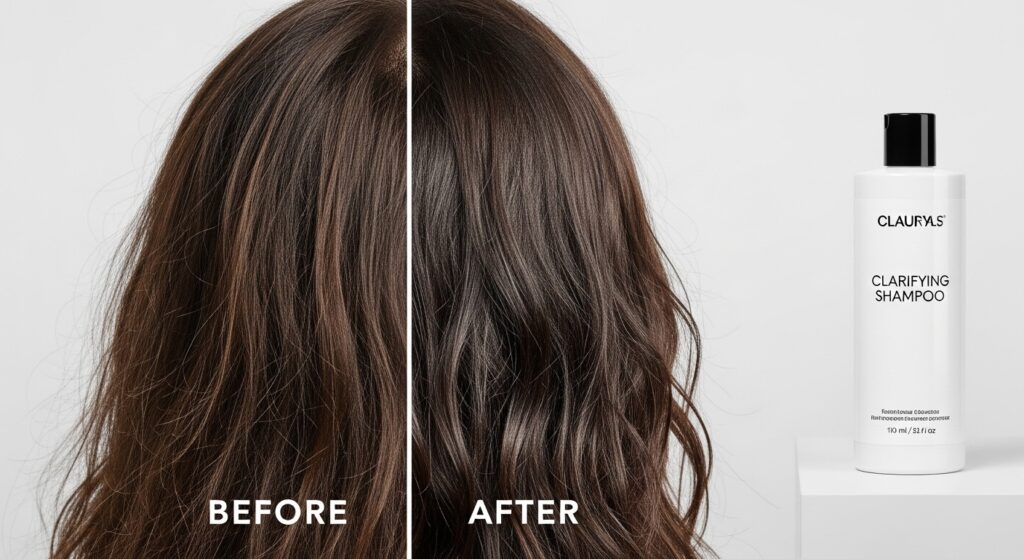
6. The Nighttime Preservation Ritual: Protect Your Style as You Sleep
You spend all that time and effort creating a beautiful wash-and-go or twist-out, only to wake up with a flattened, matted mess. Sound familiar? The friction between your hair and your cotton pillowcase is undoing all your hard work while you sleep. The subtle change here is to protect your hair at night.
A satin or silk bonnet, scarf, or pillowcase is the ultimate solution. Unlike cotton, these materials have a smooth surface that creates minimal friction. This allows your hair to glide as you sleep, preserving your curl pattern, reducing tangles, and preventing moisture loss. You’ll wake up with your second or third-day hair looking almost as good as it did on day one, saving you time and frustration.
How to implement this subtle change: Before bed, loosely gather your hair at the crown of your head and cover it with a satin or silk bonnet. Alternatively, you can wrap it with a satin scarf. If you find headwear uncomfortable, simply switching your cotton pillowcase for a satin or silk one will provide immense benefits. This one small habit is a non-negotiable for maintaining fresh-looking textured hair day after day.

Embrace the Evolution of Your Hair Care Journey
Revitalizing your textured hair doesn’t always require a radical revolution. More often, it’s about the quiet evolution of your routine—the small, smart tweaks that honor your hair’s specific structure and needs. By incorporating just one or two of these subtle changes, like the protective pre-poo or the gentle “praying hands” application, you can witness a dramatic transformation in your hair’s health, definition, and overall vibrancy.
Your hair is a living, changing part of you. What worked last year might need adjusting now. Listen to it. Pay attention to how it responds to different techniques. This journey is about discovery and celebration. So, be patient, be curious, and enjoy the process of unlocking the most beautiful, brand-new version of the hair you already have.
